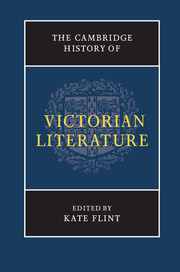Book contents
- Frontmatter
- Introduction
- PART I AUTHORS, READERS, AND PUBLISHERS
- PART II WRITING VICTORIA’s ENGLAND
- PART III MODES OF WRITING
- 7 Lyric and the lyrical
- 8 Epic
- 9 Melodrama
- 10 Sensation
- 11 Autobiography
- 12 Comic and satirical
- 13 Innovation and experiment
- 14 Writing for children
- PART IV MATTERS OF DEBATE
- PART V SPACES OF WRITING
- PART VI VICTORIAN AFTERLIVES
- Select bibliography
- Index
10 - Sensation
from PART III - MODES OF WRITING
Published online by Cambridge University Press: 28 March 2012
- Frontmatter
- Introduction
- PART I AUTHORS, READERS, AND PUBLISHERS
- PART II WRITING VICTORIA’s ENGLAND
- PART III MODES OF WRITING
- 7 Lyric and the lyrical
- 8 Epic
- 9 Melodrama
- 10 Sensation
- 11 Autobiography
- 12 Comic and satirical
- 13 Innovation and experiment
- 14 Writing for children
- PART IV MATTERS OF DEBATE
- PART V SPACES OF WRITING
- PART VI VICTORIAN AFTERLIVES
- Select bibliography
- Index
Summary
On 13 November 1849, Charles Dickens witnessed the execution of Marie and Frederick Manning at the Horsemonger Road Goal in Southwark, South London. He had rented a flat with a good view for the purpose, he claimed, of observing the responses of the thirty thousand people who had gathered together to watch the occasion – and he described what he saw in a letter to The Times later that day:
I believe that a sight so inconceivably awful as the wickedness and levity of the immense crowd collected at that execution this morning could be imagined by no man, and could be presented in no heathen land under the sun. The horrors of the gibbet and of the crime which brought the wretched murderers to it faded in my mind before the atrocious bearing, looks, and language of the assembled spectators.
He describes the ‘screeching, and laughing, and yelling in strong chorus of parodies on negro melodies, with substitutions of “Mrs Manning” for “Susannah”, and the like’, and the ‘fightings, faintings, whistlings, imitations of Punch, brutal jokes, tumultuous demonstrations of indecent delight when swooning women were dragged out of the crowd by the police, with their dresses disordered, [which] gave a new zest to the general entertainment’.
- Type
- Chapter
- Information
- The Cambridge History of Victorian Literature , pp. 220 - 242Publisher: Cambridge University PressPrint publication year: 2012
- 1
- Cited by



